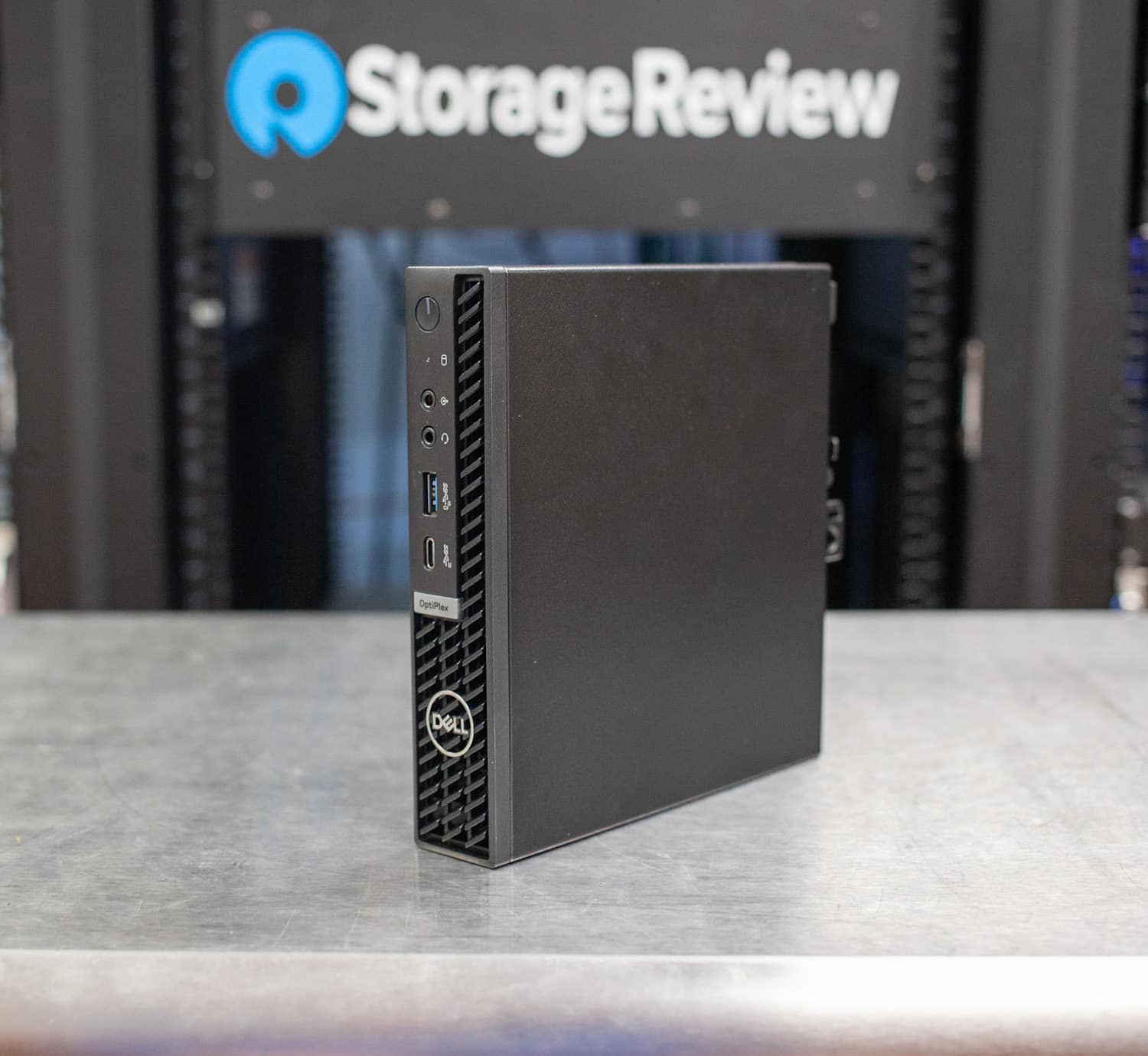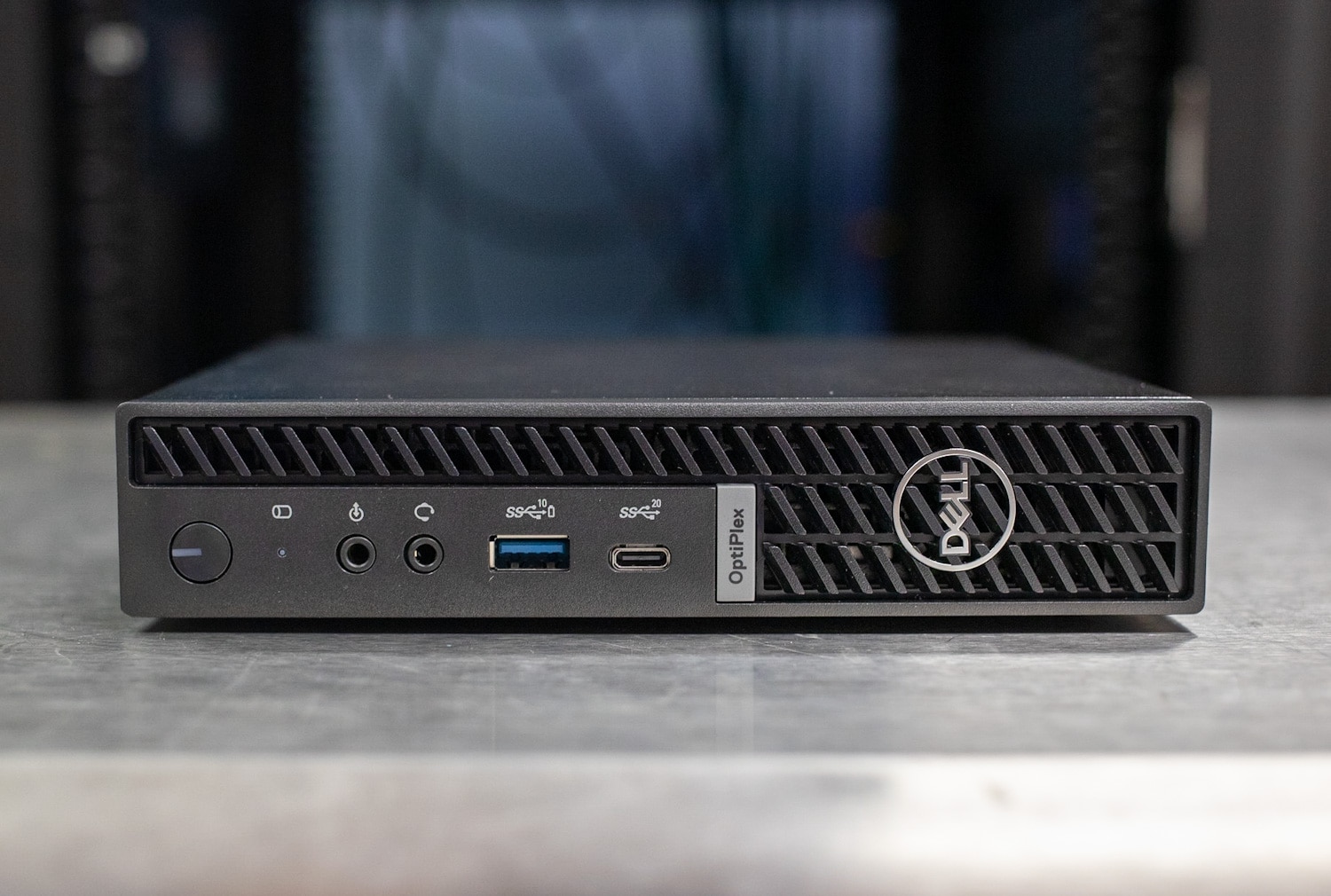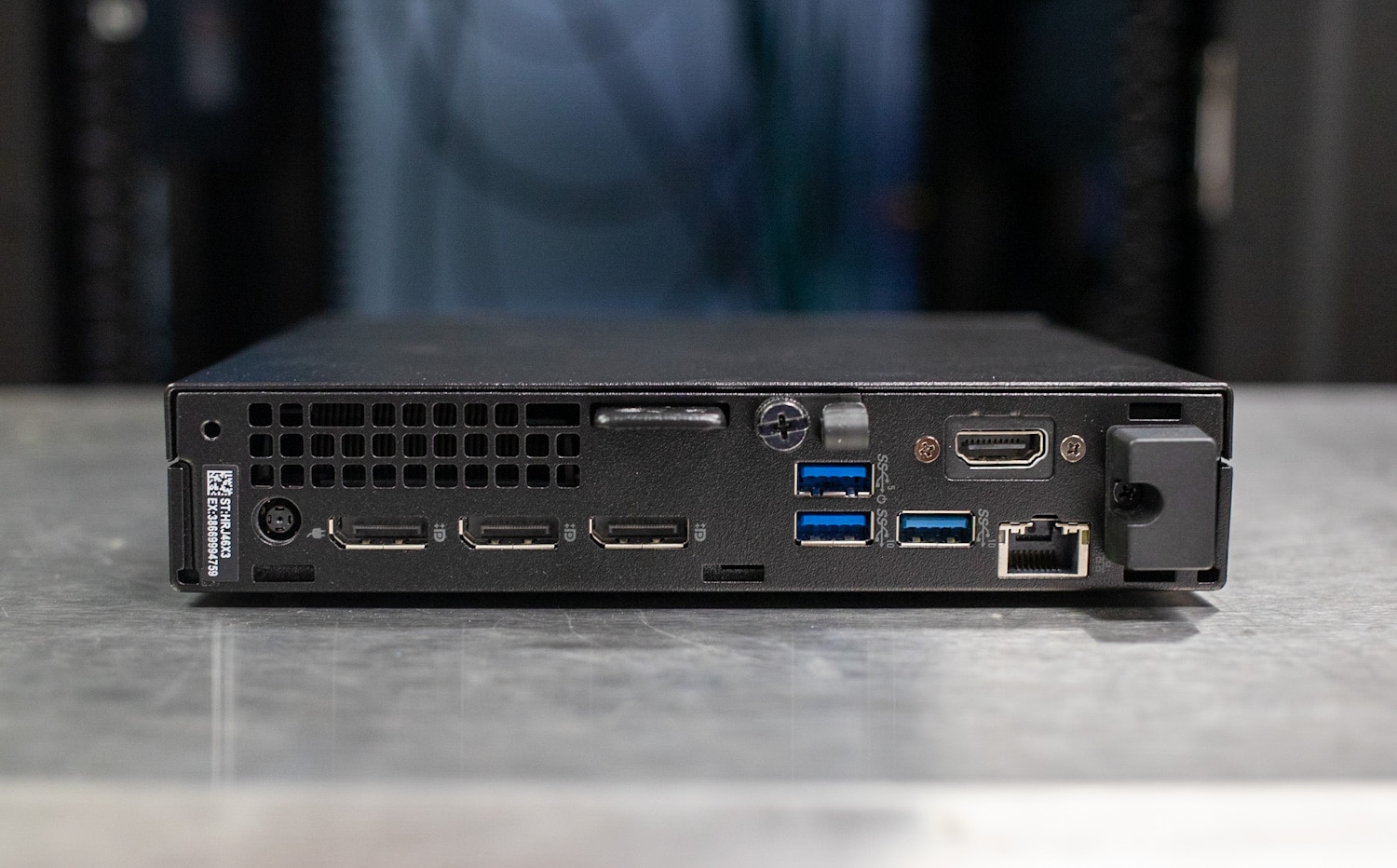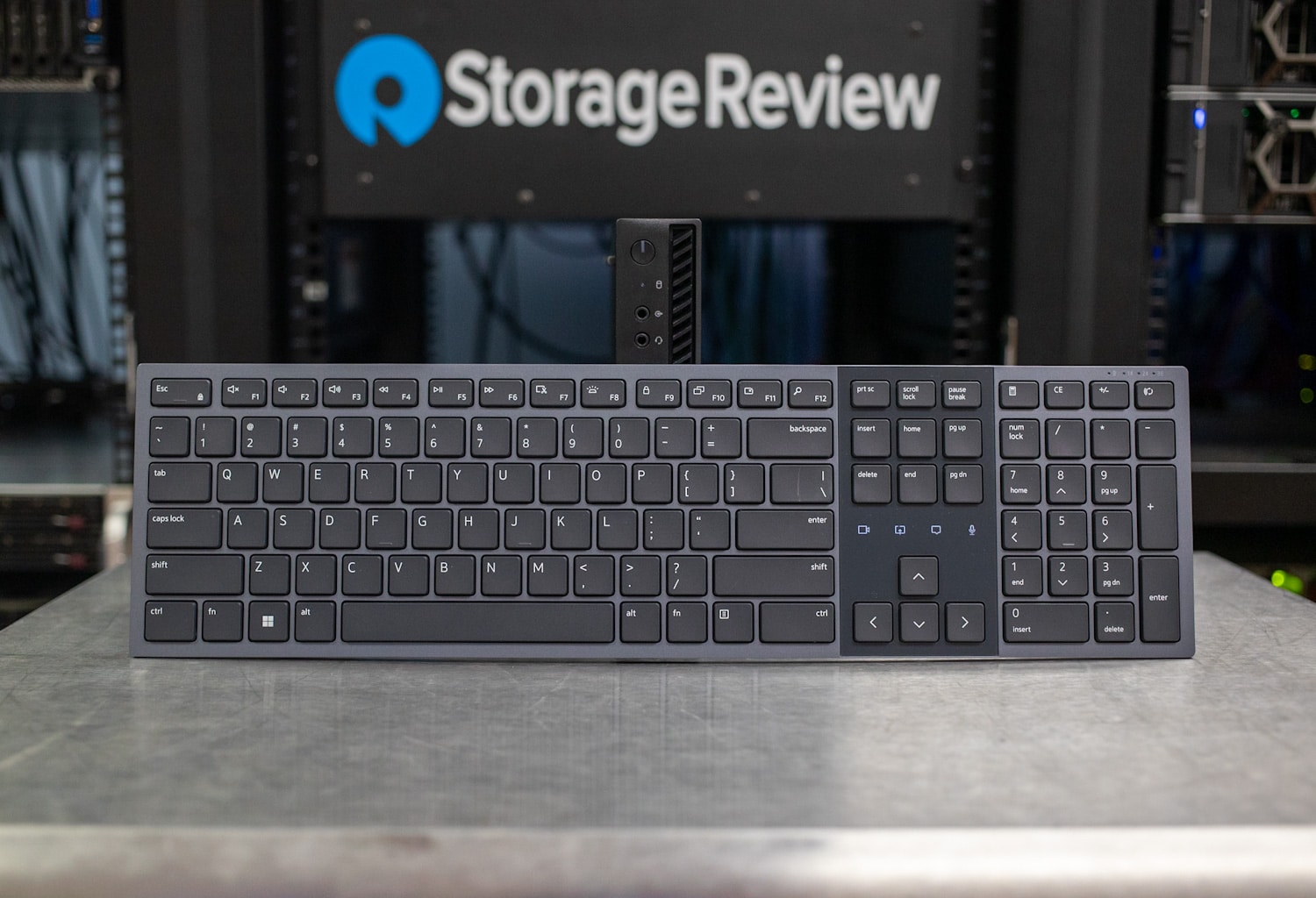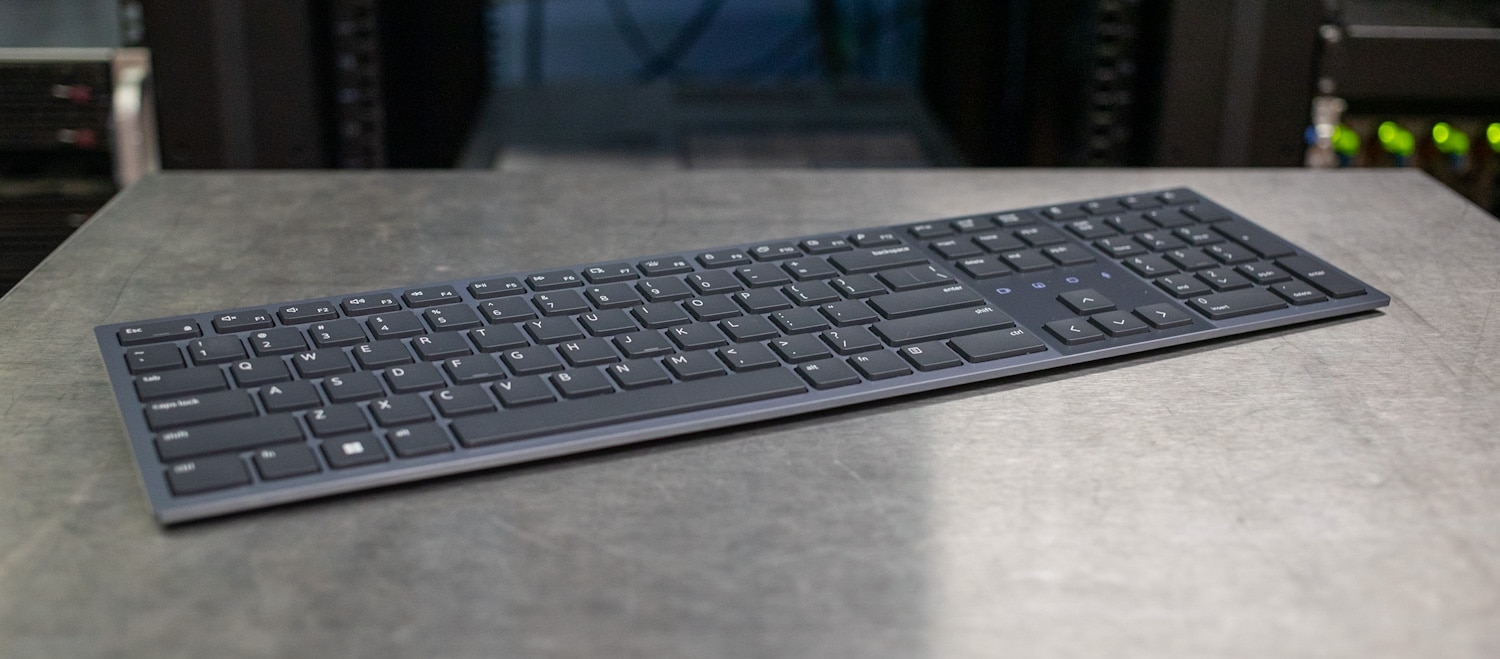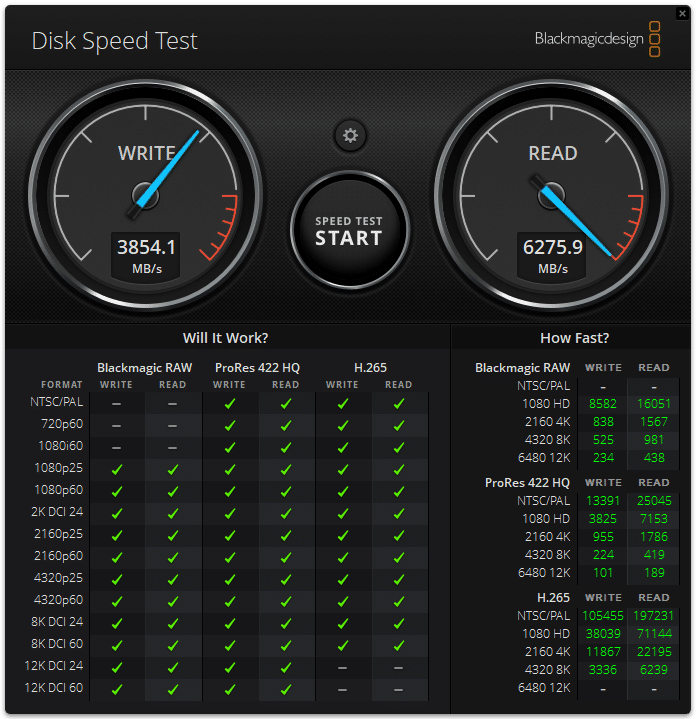The increasing popularity of tiny commercial desktops put a spotlight on the Dell OptiPlex Micro Plus. This tower boasts mid-tower performance, lots of ports, and tons of mounting options.
The increasing popularity of tiny commercial desktops put a spotlight on the Dell OptiPlex Micro Plus. This tower boasts mid-tower performance, lots of ports, and tons of mounting options.
Dell OptiPlex Micro Plus Specifications
The OptiPlex Micro Plus is a technology refresh of the OptiPlex Micro 7000. This desktop is aimed at enterprise buyers deploying in volume, though these tiny systems are often popular with homelabbers as well. Its processor options offer Intel vPro Enterprise support for simplified deployment and management. Dell provides its APEX-managed device service to commercial customers who prefer to avoid internal device support. No interest in APEX-managed service? This OptiPlex comes standard with a three-year warranty.
The most significant upgrade the OptiPlex Micro Plus offers over its predecessor is Intel’s 13th gen Core processors, including the 35-watt Core T-series line or the more powerful 65-watt Core chips found in mid-tower desktops. The “Plus” configuration we were sent uses DDR5-4800 memory, while the non-Plus version sticks with DDR4. There are also port differences between the tiers, which we’ll discuss shortly.
Here are the OptiPlex Micro Plus technical tidbits:
| Processor | 13th Gen Intel Core, 35- or 65-watt base power up to Core i9-13900 |
| Operating System | Windows 10/11, Ubuntu Linux 20.04 |
| Memory | 2x SODIMM, up to 64GB DDR5-4800 |
| Storage | 2x M.2 2280 Gen4, RAID 0/1 support |
| Graphics | Integrated Intel UHD (version varies by processor) |
| Wireless | Intel Wi-Fi 6E AX211 w/ Bluetooth 5.3 |
| Power Supply | External 130- or 180-watt adapter |
| Ports | Front:
Rear:
|
| Sustainability |
|
| Dimensions (HWD) | 7.17 x 1.42 x 7.01 inches |
| Weight | 2.41 to 2.95 pounds |
Dell OptiPlex Micro Plus Build and Design
The OptiPlex Micro Plus, at 7.2 x 1.4 x 7 inches, is small enough to be picked up with one hand and weighs between 2.41 and 2.95 pounds. (Note: weight doesn’t include the external power adapter.)
Dell emphasizes that 59.6 percent of the OptiPlex Micro Plus is made of recycled plastic and closed-loop materials. Many configurations offer EPEAT Gold, Energy Star 8.0, and TCO 9.0 certifications, which aren’t usually found in consumer-grade products. Combined with the built-in remote management tools, this OptiPlex is truly enterprise-focused.
The size of this desktop is its real selling point; it’s so small that it can be mounted almost anywhere. Its incredible variety of mounting options includes:
- Dell All-in-One VESA Mount for E-Series Monitors with Base Extender – Micro / Thin Client
- Dell Dual VESA Mount w/Adapter Bracket – Micro / Thin Client
- Dell Micro All-in-One Stand – MFS22
- Dell Single Monitor Arm – MSA20
- Dell Vertical Desktop Stand – Micro / Thin Client
- Dell Wall/Under-the-Desk VESA Mount with PSU Sleeve – Micro / Thin Client
Many mounting options include a power supply sleeve, which should mitigate the inconvenience of an external adapter.
The OptiPlex Micro Plus design isn’t distinguishable for much beyond its tiny dimensions. The front panel has airflow intake perforations and a little strip with the product name. Ports include a USB-C 3.2 Gen2x2 (20Gbps), a USB 3.2 Gen 2 with Power Share (it supports device charging when the desktop is powered off), a universal audio jack, and a line-in/line-out audio jack. The power button is at the top of the stack; it illuminates white when the system is powered on. A disk activity light is right below it.
The rear ports on this Plus model include three DisplayPort 1.4a, three USB 3.2 ports, and Ethernet. Our unit also has an optional HDMI port, which allows this model to support four monitors. Another DisplayPort, VGA, or USB-C can be ordered in place of the HDMI port.
One of the USB 3.2 ports supports Smart Power On, an extremely important feature on a little desktop like this that’s likely to be mounted behind a monitor or under a desk; it allows the desktop to power on from a keyboard plugged into this port. The OptiPlex power adapter also connects here. This desktop is too small to fit an internal power supply, so it uses a 130- or 180-watt laptop-style adapter.
Dell OptiPlex Micro Plus Expansion
The OptiPlex Micro Plus offers impressive expansion options. One thumbscrew allows the top panel to come free. The CPU heatsink and airflow shroud takes up about half the interior space.
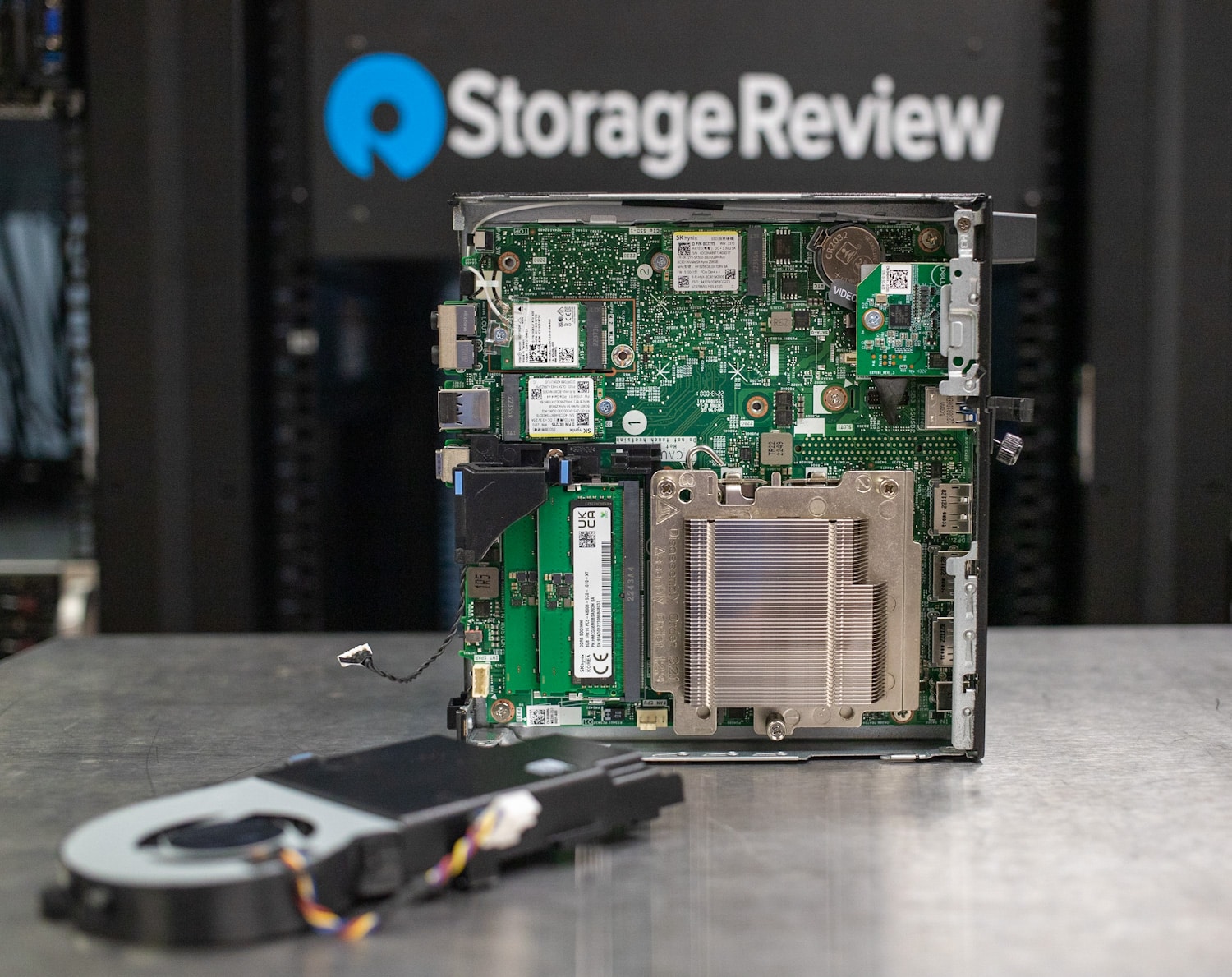
The top cover comes off for easy interior access.
Removing the shroud reveals two SODIMM slots, good for 64GB of RAM (2x 32GB). The two M.2 2280 Gen4 SSD slots are next door, and the M.2 2230 wireless card slot is sandwiched between them. The tiny circuit board seen at top right is the optional HDMI port.
The heat produced during our testing was average for a system of this nature, although the fan was audible during heavy benchmark testing. It’s certainly not loud, but it isn’t silent either, should that be a concern.
Dell Premiere Collaboration Keyboard KB900
We usually don’t review peripherals, but Dell sent us its Premiere Collaboration Keyboard KB900 ($129.99, not included in our review unit’s price.) It’s slim, stylish, and has a solid aluminum design, but its touch controls over the arrow keys make this keyboard unique.
We’ve covered Dell’s collaboration controls on several Latitude laptops, including the Latitude 9330 2-in-1. These touch-sensitive icons are automatically enabled on Zoom calls. There are icons to enable/disable your microphone and camera, enter chat, and share content. As on the Latitudes, we find these icons highly useful in real-world meetings – no more fumbling switching back to Zoom to unmute yourself.
In terms of the keyboard feel during use, the keys are short throw, although not to the same extent as a notebook keyboard such as the one found on the Latitude 9440 2-in-1. The key spacing was very nice, allowing for precise typing without accidentally pressing nearby keys. Build quality was also really nice, with a good amount of heft, so it won’t accidentally slide around your desk surface.
Dell OptiPlex Micro Plus Performance
We’re reviewing the OptiPlex Micro Plus configured as follows:
- Intel Core i7-13700 CPU (8P/8E, up to 5.1GHz, 65-watt PBP) w/ Intel vPro
- Windows 11 Pro
- 16GB DDR5-4800 SODIMM (2x 8GB)
- 256GB M.2 2230 Gen4 SSD
- Intel AX211 Wi-Fi 6E and Bluetooth 5.3
- 180-watt power adapter
- Three-year warranty
This OptiPlex starts at $993 and comes out to $1,359 as we review it. That’s the single-unit price on Dell.com; enterprises would be buying in bulk and likely receiving significant discounts.
The OptiPlex Micro Plus will face its predecessor, the OptiPlex Micro 7000, and the Intel NUC 13 Pro in our performance tests. The OptiPlex Micro 7000 uses the older Core i7-12700 processor. Both OptiPlex desktops should outclass the NUC 13 Pro, which uses a laptop-grade Core i7-1360P chip with four Performance and eight Efficient cores and a 28-watt base power.
By comparison, the Core i7-13700 in our OptiPlex Micro Plus has eight Performance cores, eight Efficient cores, and a much higher 65-watt base power. The NUC 13 Pro’s advantage is that it has faster Intel Iris Xe graphics instead of the generic Intel UHD integrated graphics used by both OptiPlex desktops. Let’s see how this plays out.
SPECworkstation 3
Our first test is SPECworkstation3, which specializes in benchmarks designed to test all key workstation performance aspects. It uses over 30 workloads to test CPU, graphics, I/O, and memory bandwidth. The workloads fall into broader categories such as Media and Entertainment, Financial Services, Product Development, Energy, Life Sciences, and General Operations. We will list the broad-category results for each instead of the individual workloads. The results are an average of all the individual workloads in each category.
We only have numbers for the OptiPlex Micro Plus and the NUC 13 Pro. The OptiPlex surprisingly trailed the NUC in most subtests. Granted, this isn’t the type of work with which either of these little PCs would generally be tasked.
| SPECworkstation 3 (Higher is better) | Dell OptiPlex Micro Plus (Core i7-13700) | Intel NUC 13 Pro (Core i7-1360P) |
| M&E | 2.05 | 2.11 |
| ProdDev | 2.45 | 2.19 |
| LifeSci | 1.91 | 2.14 |
| FSI | 3.3 | 2.81 |
| Energy | 2.5 | 2.36 |
| GeneralOps | 2.76 | 2.98 |
| GPU Compute | 0 | 0.22 |
7-Zip Compression Benchmark
The excellent 7-Zip file archive tool has a handy built-in compression benchmark. We ran ten passes using a 128MB dictionary size. Higher numbers are better.
Here, the OptiPlex Micro Plus shows the strength of its new Core i7 processor, with the highest scores in the group. Its advantages over the NUC were especially evident in Decompression testing.
| 7-Zip Compression Benchmark (Higher is better) | Dell OptiPlex Micro Plus (Core i7-13700) | Dell OptiPlex 7000 Micro (Core i7-12700) | Intel NUC 13 Pro (Core i7-1360P) |
| Compressing | |||
| Current CPU Usage | 1065% | 1689% | 707% |
| Current Rating/Usage | 5.484 GIPS | 3.698 GIPS | 8.349 GIPS |
| Current Rating | 58.384 GIPS | 62.454 GIPS | 58.993 GIPS |
| Resulting CPU Usage | 1141% | 1719% | 686% |
| Resulting Rating/Usage | 5.800 GIPS | 3.720 GIPS | 8.799 GIPS |
| Resulting Rating | 66.013 GIPS | 63.965 GIPS | 60.309 GIPS |
| Decompressing | |||
| Current CPU Usage | 1994% | 1949% | 1534% |
| Current Rating/Usage | 4.692 GIPS | 4.382 GIPS | 4.752 GIPS |
| Current Rating | 93.537 GIPS | 85.422 GIPS | 72.919 GIPS |
| Resulting CPU Usage | 1838% | 1959% | 1518% |
| Resulting Rating/Usage | 5.262 GIPS | 4.380 GIPS | 4.847 GIPS |
| Resulting Rating | 92.907 GIPS | 85.781 GIPS | 73.596 GIPS |
| Total Ratings | |||
| Total CPU Usage | 1489% | 1839% | 1102% |
| Total Rating/Usage | 5.531 GIPS | 4.050 GIPS | 6.823 GIPS |
| Total Rating | 79.460 GIPS | 74.873 GIPS | 66.953 GIPS |
SiSoftware Sandra 2021
We also run the popular SiSoftware Sandra 2021 suite. Higher numbers are better in all subtests. The OptiPlex Micro Plus practically tied its predecessor in the overall score, though it had notably higher cache and memory bandwidth. That appeared to come at the price of higher latency, though.
| SiSoftware Sandra 2021 | Dell OptiPlex Micro Plus (Core i7-13700) | Dell OptiPlex 7000 Micro (Core i7-12700) | Intel NUC 13 Pro (Core i7-1360P) |
| Memory Bandwidth | 47.870 GB/s | 42.814 GB/s | 37.148 GB/s |
| Cache & Memory Latency | 51.9 ns | 37.1 ns | 59.2 ns |
| Cache & Memory Bandwidth | 414.025 GB/s | 334.737 GB/s | 296.416 GB/s |
| Overall Memory Score | 1.83 kPT | 1.84 kPT | 1.44 kPT |
Luxmark
Next is LuxMark, an OpenCL GPU benchmarking utility. We only have numbers for the OptiPlex Micro Plus and the NUC 13 Pro in this. The OptiPlex’s Intel UHD integrated graphics are less capable than the NUC 13 Pro’s Iris Xe integrated graphics. Either way, these numbers are low, and you wouldn’t task systems like these with real 3D work.
| Luxmark (Higher is better) | Dell OptiPlex Micro Plus (Core i7-13700) | Intel NUC 13 Pro (Core i7-1360P) |
| Hallbench | 1,331 | 1,605 |
| food | 593 | 824 |
Blackmagic RAW Speed Test
Our next test is the Blackmagic RAW speed test, which tests decoding speed of Blackmagic RAW frames. We only have numbers for the OptiPlex Micro Plus and the NUC 13 Pro. The OptiPlex again flexed its higher-wattage CPU, pulling ahead in 8K CPU, though it lost out to the NUC’s Iris Xe graphics in 8K OpenCL.
| Blackmagic RAW Speed Test (Higher is better) | Dell OptiPlex Micro Plus (Core i7-13700) | Intel NUC 13 Pro (Core i7-1360P) |
| 8K CPU | 77 fps | 44 fps |
| 8K OPENCL | 19 fps | 25 fps |
Blackmagic Disk Speed Test
The last test is the popular storage-drive benchmark, Blackmagic’s Disk Speed Test. The OptiPlex Micro Plus Gen4 SSD seems to put up strong numbers for an OEM drive. The drive in our unit is a Kioxia BG5, which Dell calls “Class 35.”
Conclusion
Commercial customers will appreciate Dell’s tiny OptiPlex Micro Plus. It has the performance that everyday and advanced users require, thanks to its 13th Gen Intel Core chips, and Intel vPro remote management for streamlined maintenance and deployment by IT or managed services.
The OptiPlex Micro Plus standout features include port selection, available built-in wireless, support for two SSDs, and 64GB of RAM. Mounting options are where it really shines — the OptiPlex Micro Plus can sit on a desk, be mounted behind a monitor, under a desk, or even become part of a pseudo-all-in-one desktop setup. Most of these setups include a sleeve for the OptiPlex’s external power adapter to simplify the setup. There is also support for up to four monitors.
And, of course, Dell also seems to have reasonably priced this desktop, especially for enterprises likely to buy in volume. Overall, the OptiPlex Micro Plus earns our recommendation as a highly versatile, micro-sized business desktop.
Engage with StorageReview
Newsletter | YouTube | Podcast iTunes/Spotify | Instagram | Twitter | TikTok | RSS Feed

